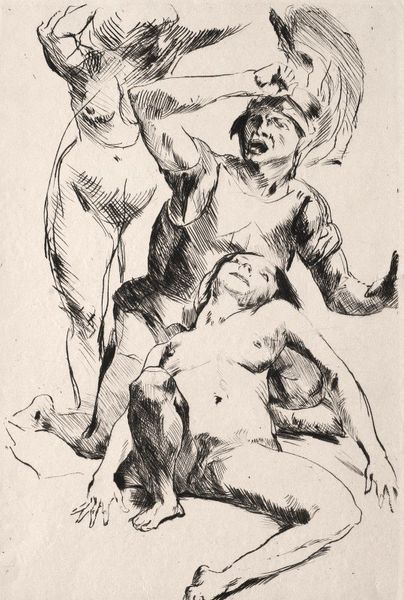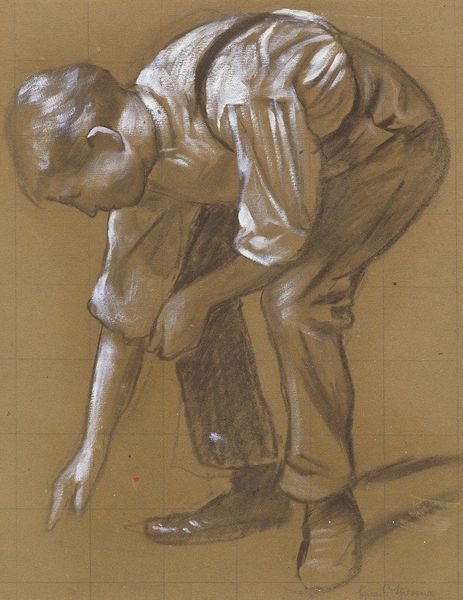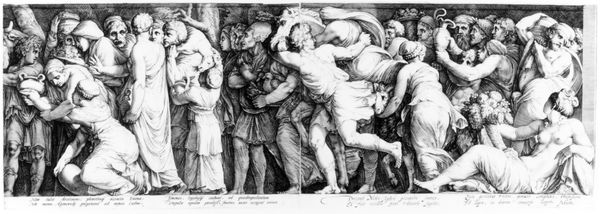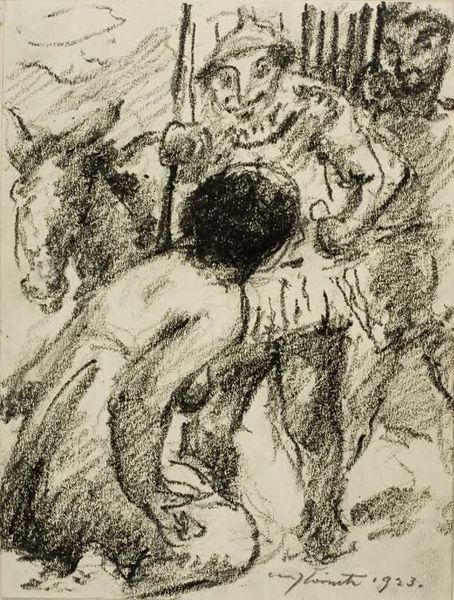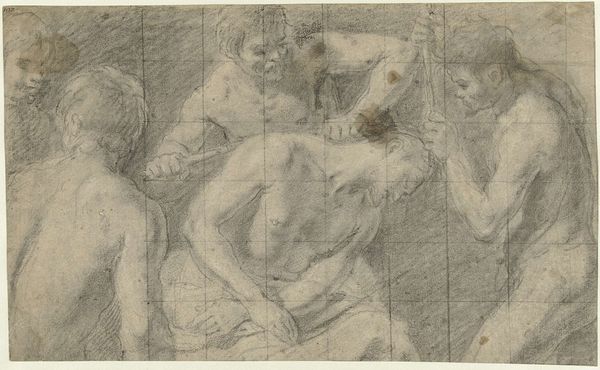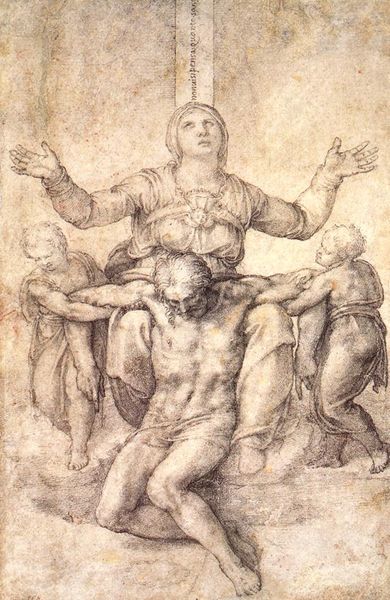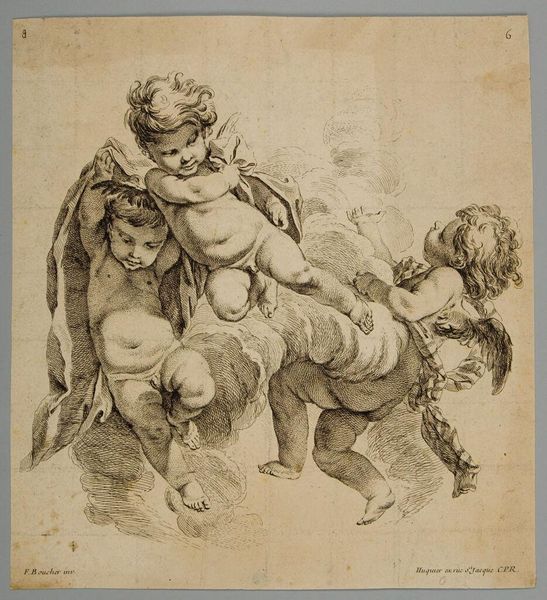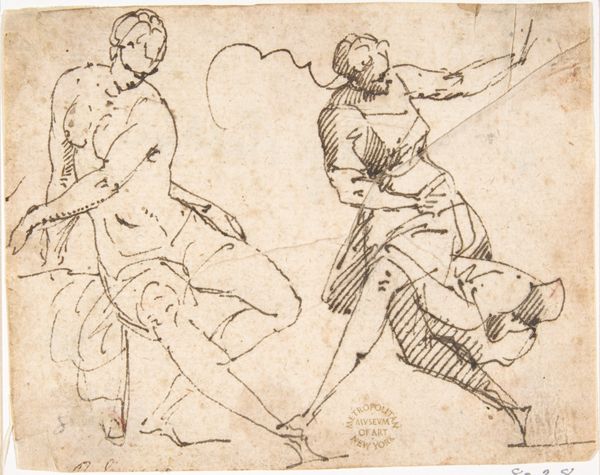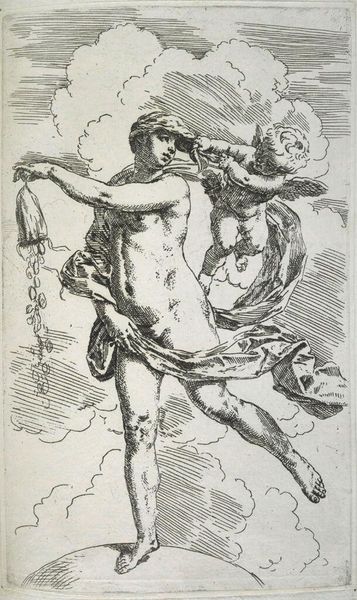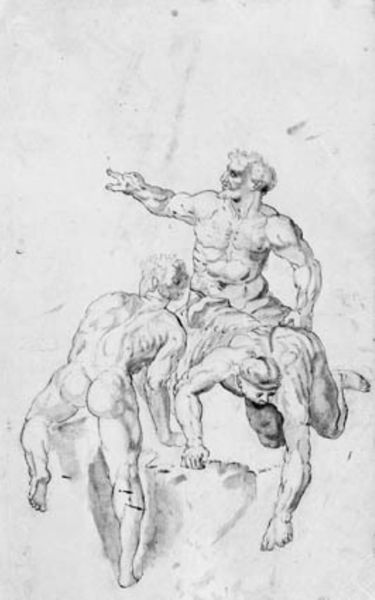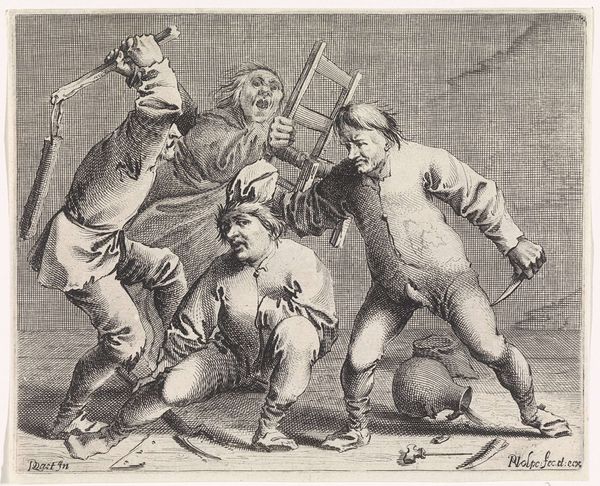
drawing
#
drawing
#
figuration
#
11_renaissance
#
history-painting
#
italian-renaissance
#
monochrome
Copyright: Public domain
Editor: This is Raphael's "Study for the 'Entombment' in the Galleria Borghese, Rome," created around 1505. It’s a monochrome drawing, and you can see the grid underneath, used to transfer the design. I’m struck by how much emotion is conveyed through simple lines. What kind of symbols do you see at play here? Curator: The most powerful symbol is, of course, the Entombment itself, the taking down of Christ. What resonates across centuries is how a society chooses to depict profound loss and how that imagery, in turn, shapes collective memory. Editor: So, you’re saying that the way Raphael visualizes this moment influences how people remember it? Curator: Precisely. Look at the faces. What emotions are amplified? Grief, obviously, but also support, resilience, and the continuity of community in the face of tragedy. Each figure holds a specific symbolic weight. Can you identify who some of them are? Editor: Well, the one holding Christ seems strong, but exhausted, while the women display a mix of anguish and tenderness. I also note there are more figures in the sketch than those bearing the body, and they seem detached. Curator: Consider why Raphael chose those particular expressions. He’s tapping into archetypes of mourning, refining them, presenting a potent, timeless image. This image becomes embedded in cultural understanding, influencing future artists and shaping viewers' emotional responses, connecting the present to the historical narrative. And he probably spent months sketching versions to pick these exact forms. Editor: I never considered how an artwork can sculpt collective memory like that. It’s amazing to see how carefully crafted and thought through everything is. Curator: These careful choices give the emotional response an ability to reach through history, and maybe teach us something new about ourselves as well.
Comments
No comments
Be the first to comment and join the conversation on the ultimate creative platform.
